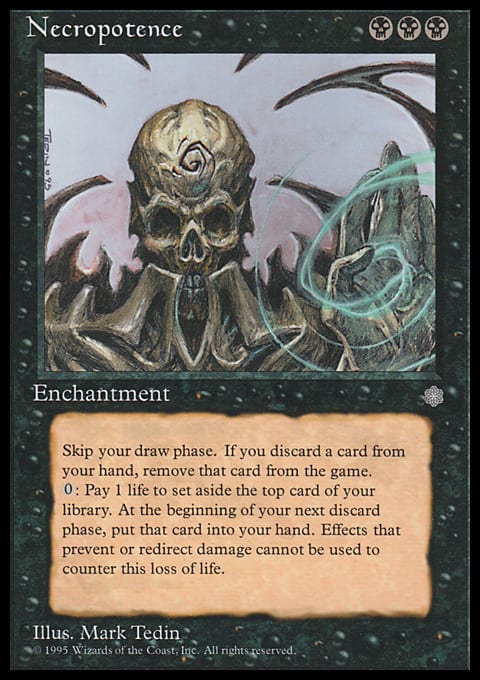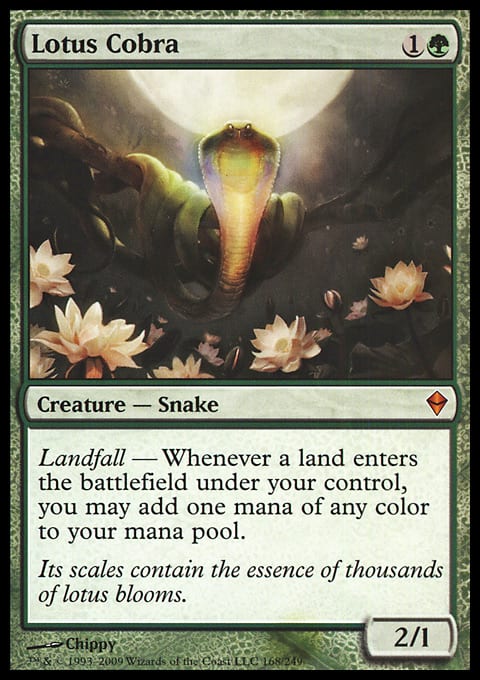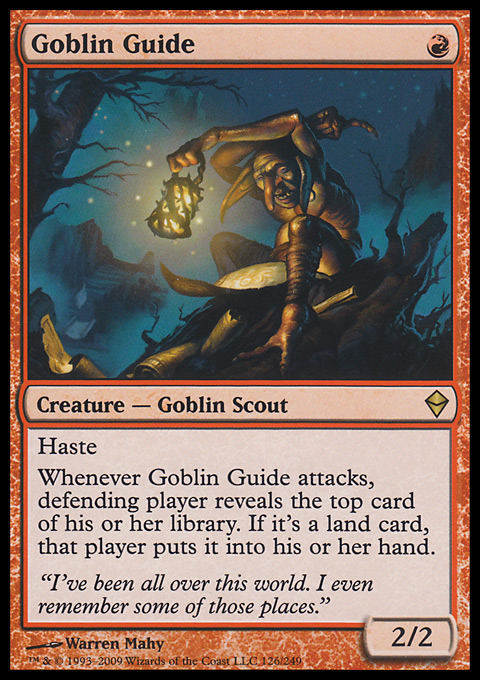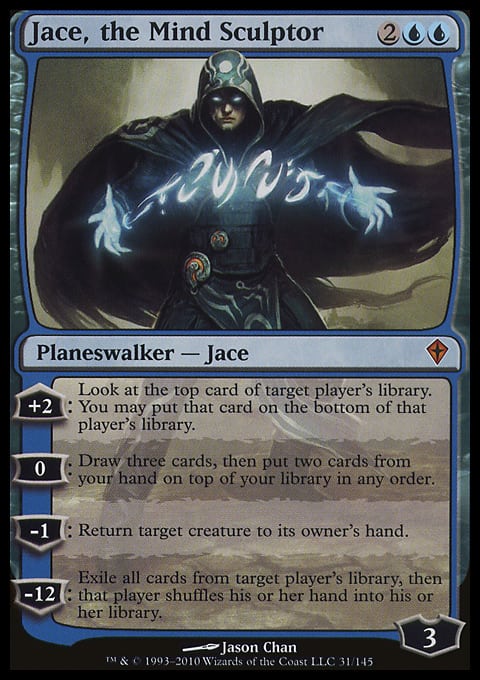I have Magic friends at every skill level and at every point of pursuing the Pro Tour dream, including those who don’t pursue it at all. I’ve learned that many of them have an unrealistic vision of what it means to be a pro, what being on the Pro Tour is like, and how to make it there. Not surprisingly, Wizards of the Coast does little to correct this impression. Now, I would be a hypocrite or worse if I suggested to people that they should quit Magic or avoid Organized Play, but I do want to take this opportunity to make sure you’re aware of the real pros and cons of Premier Play.
For the purposes of this discussion, I will mainly be talking about three elements: Pro Tour Qualifiers, Grands Prix, and Pro Tours. Each one has its own appeal, its own mathematics, and its own set of pros and cons.
Pro Tour Qualifiers
On the surface, this element of Organized Play may seem to be the most straightforward. You go there, pay an entry fee, typically play against a reasonable number of opponents, and hope to emerge the winner and proud owner of an invite to the Pro Tour—with the airfare to go there. For the most part, things are just as they appear when it comes to PTQs. Even if the Pro Tour didn’t exist, it would be perfectly reasonable if you felt that PTQs were a worthwhile way to spend your day and your entry fee.
The Cost – Gas or a public transportation fee, an entry fee of $25–$30, and a day of your time.
The Benefits – You get to see all of your local Magic friends in one place, you get to buy from/sell to/browse dealers, and you get to spend all day playing competitive Magic.
Even if you had no shot at winning the event, it could be a pretty reasonable return on your entertainment dollar if you enjoy playing competitive Magic enough. When things become a little less straightforward is when a big part of whether it’s worth it for you to enter is the fact that you have a shot at being invited to the Pro Tour. If that’s a big factor for you, there are a few additional things you need to consider: How easy is this PTQ? How good am I? No, really? What value does a Pro Tour invite actually have for me?
There are a few factors that are important to consider when answering the first question. The first is what you expect the attendance to be like. Obviously, the fewer people who show up at your local events, the easier it should be for you to win. Back when I was allowed to play in PTQs (they used to allow qualified players to play), I used to drive my friends to remote PTQs in less populated areas that typically had low attendance in order to increase our chances of winning, and it often seemed to help. The next thing to consider is how tough the competition will be. Some areas have a greater number of high-level players than others, and it doesn’t always equate to the overall number of competitors. Last, you need to consider the format. Is it a format that gives you an advantage? Is your deck better than most? Are you particularly good at playing it? Is it a Limited format in which you’re a little ahead of most of the field?
The second question is the hardest for many people to answer accurately. It seems almost impossible for most players to correctly assess their own level of Magic ability. While overestimating one’s own prowess is the most common, there are plenty of people who undervalue their skill as well. Usually, the best way to make this assessment is to gather as much data as possible: Play in as many events as you can, giving yourself many opportunities to measure your success against that of others. This has the side benefit of giving you a lot of practice.
The last question is hard to answer well unless you’ve already been to a Pro Tour, but I will try to help you better understand what things the Pro Tour actually does and doesn’t offer you. Before I do that, though, let’s discuss the element of Premier Play that’s open to all: Grands Prix.
Grands Prix
The attendance numbers at Grands Prix is actually one of the things that inspired me to write this article. For the forty-eight GPs since the start of 2012, the average attendance has been over a thousand players. In the thirty-six that took place in Europe, Japan, and the U.S., the average attendance had been closer to twelve hundred players. With these kinds of long odds, you need a pretty impressive potential return on your investment to make it worth traveling any significant distance to play in one.
This situation wasn’t always the case. The first seventy-nine GPs ever held all had fewer than nine hundred players and typically had between two hundred and four hundred players. Even then, it wasn’t until 2008, after there had been over two hundred thirty GPs, that a U.S. GP broke a thousand players. Many believed that European and Japanese GPs had greater attendance due to less access to PTQs. Yet in 2012, GP: San Jose had close to eighteen hundred players and GP: Philadelphia had close to two thousand players, a number only topped by GP: Paris in 2011, which was held at a Pro Tour. This might lead an observer to believe one of three things was happening:
- There were fewer GPs, packing the same number of players into fewer, bigger events.
- WotC was making the prizes at GPs much better.
- The popularity of Magic and premier organized play was exploding with a much increased player base.
Well, the first two are definitely not the case. Wizards actually reduced the number of Pro Tours and increased the number of GPs. WotC OP explained this was done in part so people wouldn’t have to fly to GPs—if they just waited a little while, one would come to their areas. If WotC actually expected this to reduce attendance at individual events, they were very wrong.
Early GPs were like a kind of super PTQ, giving away eight Pro Tour invites. When Wizards increased the number of GPs, they actually reduced the number of invites being given away to one! Yet attendance exploded. To WotC’s credit, they have recently reinstated the eight-invite rule for GPs with over twelve hundred players, of which there are quite a few these days.
The cash payout isn’t the kind that makes attractive pot odds for over a thousand people. Only the Top 64 receive a cash prize, and only the Top 8 win more than $600. Significantly less than one percent of the players in a Grand Prix will earn a prize. If you went to a local tournament that had two hundred players and they were charging $40 to enter but only giving away one prize, most people would be appalled, especially if that prize was only a couple grand or less. The prize pool is about $25 per person, but even the local players are spending $40 on the entry fee, money for gas, and a day of their time. A player from out of town has to add on hotel, airfare, and local transportation. I mentioned the surprising willingness of players to invest in events with such bad odds to my father, and he shrugged, completely unsurprised, saying, “Lots of people play the lottery, too . . . ”
To be fair to WotC, they aren’t forcing us to attend, and they certainly aren’t forcing players to fly in from out of town for GPs. That’s on us. The actions of Wizards’s Organized Play department have shown a marked preference for trying to keep attendance figures at individual live events a bit lower and to instead push their presence online more. By increasing the number of GPs and reducing the number of invites being given away, they expected attendance to drop or maybe stay the same, certainly not to reach record numbers. When they experimented with running a GP at a PT in Paris, they posted a record two thousand one hundred eighty-two people and immediately decided not to do that again. They’ve actually swung in completely the opposite direction: going so far as to close Pro Tours to the public while refocusing spectating to online streams.
There definitely seems to be a disconnection between Wizards and Premier Tournament Organizers. Every person through the door of a GP run by an organizer is another $40 entry fee for them. When attendance breaks a thousand players, organizers are mentally and sometimes literally running around looking for high fives and chest bumps. There have been some logistical growing pains as organizers have had to learn how best to run events with such great numbers of people, but they’ve considered this a wonderful problem to have, and most have adapted admirably. Organizers that previously lined up to run side events at Pro Tours now are focusing on Grands Prix and hoping the deluge of players continues unabated.
Most competitive Magic players who are successful enough to travel great distances frequently for events are pretty smart people. So, if the pot odds are so bad, why are they doing it? There are two main reasons:
- The Dream – This is the one that worries me. Many people believe that they are destined to make it onto the Pro Tour and then to eventually make it onto the gravy train and, from there, become the Magic version of rich and famous. For the most part, this is exactly what the name suggests: a dream. I’ll discuss the reasons more once we reach the PT portion of this discussion.
- The Party – This part can be pretty cool. Most serious Magic players find their closest friends to be other Magic players. When you share the same cool obsession, it provides strong groundwork for friendship. So when over a thousand young people with the same common interest go on vacation at the same time in the same major city, it makes for a weekend of fun; whether it’s dancing, drinking, eating out, sight-seeing, or just endless drafting, there’s a ton of fun to be had.
Much like PTQs, how attractive the prizes are at GPs is hard to determine exactly without understanding what it means to be invited to the Pro Tour.
The Pro Tour
Once you make it to the Pro Tour, the pot odds are much, much better than at a GP. Attendance at a PT is usually between three hundred and four hundred, with the Top 75 splitting up $250,000 and no prize smaller than $1,000. If you’re among the hundred or so best players in the world and you’re well prepared for the event, these are pretty attractive pot odds. Given that the Top 25 players all win at least $2,500, this is definitely worth taking a shot at if you keep your expenses under $1,000 or so.
Even if you’re not already a top pro, this can be a very good deal for you. If you qualified at a PTQ or a GP, your airfare is paid for! For the most part, if you’re qualified, it’s usually pretty attractive to go: Either you have your airfare paid for, you have an appearance fee, or at least you’re a top player with a shot at relatively big money.
That said, it’s not quite as good as it may seem. First of all, if you do win money, you’re going have to give a lot of it to the IRS. If you spend $1,000 on expenses and manage to win $1,000 for making the Top 75, you’re going to be losing quite a bit of money on the deal, not breaking even. Second, if you want to have a realistic shot at the money, you need to make a huge investment of time.
Putting aside the countless hours you invested in qualifying for the Pro Tour, let’s just look at what’s required to make your Top 75 dream happen. You need to spend the time and money to master the most recent Draft format. This is not the sort of thing you’re going to accomplish with two or three Drafts—you’re playing against the best players in the world. If that’s not enough, you also need to master a Constructed format, too. You need to design/select a deck, acquire the cards, carefully tune it, learn to play it with mastery, and then hope the field shapes up favorably for you and your deck. The kind of time commitment required to be an elite Magic player is the kind of time commitment that often interferes with careers and relationships, especially if you’re constantly traveling to PTQs and GPs also. Even if you do all these things, everyone else will be doing them, too. What makes you think you’re going to be one of the lucky seventy-five out of four hundred of the world’s very best?
Worse yet, unless you make the Top 25, you’re right back where you started: off the Pro Tour. The true beauty of the Pro Tour isn’t the $250,000 pot of gold that everyone’s battling for a part of. It’s the journey itself. This is what you have to decide for yourself. If you prepare for, travel to, and play in PTQs, GPs, and maybe eventually a PT or two, will it still be worth it if you never win a big cash prize? If you love playing the game, if you yearn to play against the very best and if hanging out with good Magic players is your idea of a good time, heck, everybody should go on a vacation once in a while—why not play some Magic?

























